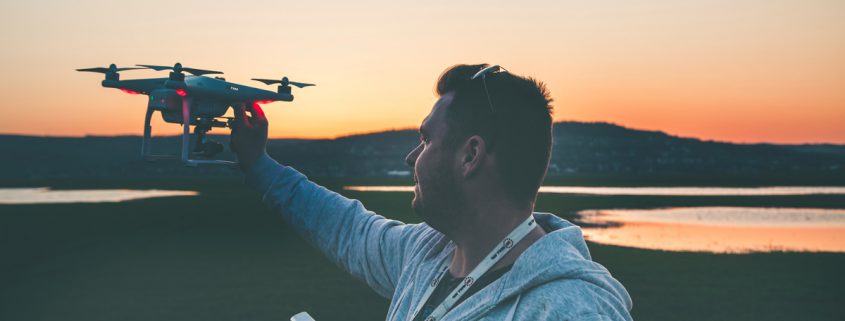Understanding Drone Survey Accuracy
Everyone knows that drone surveys are faster and safer, but are they really more accurate? UAV mapping technology has made some substantial strides within the past decade and now encompasses a huge industry. From small, mobile “toys” to hardy, military-grade equipment, drones are now used throughout many sectors and for many purposes. How can you compare drone survey accuracy to the accuracy of older surveying methods?
What Does “Accuracy” Mean?
When it comes to land surveying, accuracy can mean multiple things. As an example, older photogrammetric technology is occasionally said to have higher resolution because it takes a series of high-resolution photos and creates a 3D plane from these photos. However, this great level of resolution isn’t always meaningful because it doesn’t necessarily correlate to useful 3D point data. Comparatively, advanced LiDAR technology may not have the same pixel size, but contains many times the amount of useful topological data.
Rather than using resolution or pixels, accuracy in a ground survey is usually associated with the accuracy to which the 3D data can simulate the real-world. In other words, how accurate the measurements are, both absolute and relative to the surroundings and the site itself. This is understandably more complex; while anyone can say that you can create scans of a specific resolution, it requires a lot of real-world data to say that you create scans of a specific level of accuracy.
How Do Drones Determine Their Position?
Drones can scan the ground with highly precise technologies such as LiDAR. These technologies send out hundreds of thousands of pulses per second to map topological differences relative to each other, contributing to a very high degree of relative accuracy. However, absolute accuracy is determined using GPS. GPS isn’t always able to produce a completely accurate relative position, and consequently, further data analysis is often required.
This data analysis is often supported through the use of ground control points. Ground control points create fixed and known points that the drones can use to position themselves and continually correct their own positioning. Understandably, these ground control points must also be carefully positioned for the right level of accuracy.
Drones may be adversely impacted by things such as weather conditions, terrain profiles, and, of course, the drone hardware. Hardware matters when hiring a drone surveying company, as the more advanced the UAV mapping hardware is, the less likely the drones are to be influenced by things such as poor weather conditions and difficult terrain profiles.
How is the Accuracy of Drones Tested?
Drone survey accuracy is tested through margins of error when drone data results are compared to real-world information and conventional surveying methods. By testing drone accuracy against known sets of data, operators and surveyors can determine how accurate the drones are as a whole. From there, they can publish how accurate their surveys are. The accuracy level must be reproducible to be claimed. When accuracy is reported for a drone survey, it is reported using the exact same accuracy measurements as any other type of surveying. A drone survey that boasts 2 CM accuracy will be as accurate as another type of survey that boasts 2 CM accuracy.
Best-in-class UAV mapping technologies can currently resolve surveying sites to 1 CM of accuracy. This accuracy is extremely competitive with other technical models and is supported through the use of careful real-world analysis and testing. While drone survey accuracy can be influenced through a number of factors, the right drone surveying company can carefully control these factors and create reliable, reproducible results.




